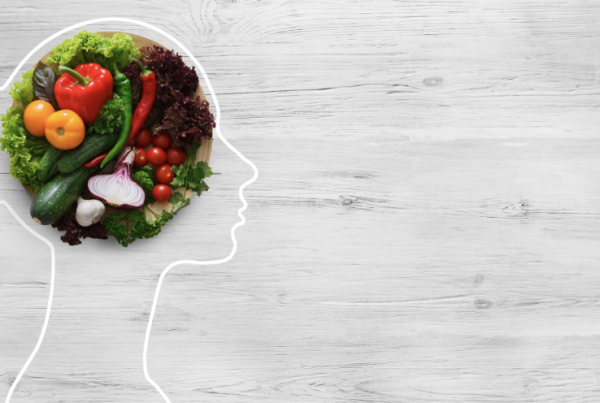Every relationship experiences highs and lows, but being with someone who has bipolar disorder can feel like you have no understanding of when – or how often – you experience those peaks and troughs. However, the presence of bipolar disorder in a relationship does not make it impossible. The first step to strengthening a relationship with bipolar disorder is understanding how it presents itself, that way, active measures may be taken to prevent bipolar symptoms from interfering with the relationship. In this blog, we’ll cover what bipolar disorder is and how it can affect relationships.
What is bipolar disorder?
Previously clinically known as manic-depressive disorder or manic depression, most people assume bipolar disorder is a frequent, rapid interchanging of moods on extreme ends of the emotional spectrum. In reality, the disorder is far more complex. There are seven types of bipolar disorders recognized by the DSM-5, the three main types being Bipolar I, Bipolar II, and Cyclothymic Disorder. Imperative to understanding the main types of bipolar disorder is first understanding the different mood episodes that characterize them. They are:
- Mania: Characterized by elevated, expansive, or irritable mood, and persistently increased activity or energy that is present for most of the day, every day, for at least a week. Some symptoms of a manic episode include, decreased need for sleep, racing thoughts, distractibility, psychomotor agitation, and increased involvement is risky behavior/activities
- Depression: Characterized by persistent hopelessness, pessimism, and anhedonia – an inability to enjoy – over at least a two week period. Some symptoms of a depressive episode include, changes in appetite and/or weight, sleep disturbances, loss of energy, social withdrawal, indecisiveness, and suicidal tendencies (i.e. ideation or attempt)
- Hypomania: Identified by the same symptomatology as a manic episode, but described as less severe than mania. The two key distinctions between mania and hypomania is 1) the disturbance in mood and functioning in a hypomanic episode is not enough to cause the marked impairment seen in a manic episode and 2) their duration is different – manic episodes last at least a week and hypomanic episodes last at least 4 consecutive days
- Mixed: When people experience both depressive and manic (or hypomanic) symptoms in the same episode. A person can experience sadness, hopelessness, etc. while simultaneously feeling energized.
Bipolar I is what most people are referring to when describing bipolar disorder. The key feature of this type of bipolar is the presence of a manic episode. It may be preceded or followed by hypomanic or depressive episodes, which contributes to the highly generalized assumption of bipolar disorder as a fluctuation between mania and depression. Conversely, Bipolar II is characterized by emotional/behavioral shifts between hypomania and depression, as well as complete absence of mania, further distinguishing it from Bipolar I. Lastly, Cyclothymic Disorder is clinically identified by chronic fluctuation between hypomanic and depressive episodes over at least a two year period. However, the hypomanic and depressive symptoms are of insufficient number, severity, pervasiveness, or duration to meet the full criteria for either type of episode. Therefore, it is sometimes described as a mild bipolar disorder since it typically involves cycling between mild mania (hypomania) and mild depression (sometimes called dysthymia).
How Does Bipolar Disorder Affect Relationships?
Before describing the different ways bipolar disorder can present extra challenges to a relationship, it is important to note that having the disorder does not mean that fostering healthy, long-lasting relationships is out of reach. Bipolar disorder is typically a chronic condition that requires lifelong attention, but most importantly, it is highly treatable. Psychotherapy, medication, or a combination of the two can significantly improve a person’s ability to recognize and control their bipolar symptoms. This, in turn, can enable them to prevent bipolar symptoms from taking a greater toll on their relationships.
Everyone experiences emotional highs and lows in life, but those with bipolar disorder tend to experience those emotional states at a severity that interferes with their day-to-day functioning and interpersonal relationships. The emotional and behavioral components that result in long-lasting, deep connection in relationships is complex. All relationships, but especially romantic relationships, require a level of commitment, consistency, time, and hard work, and having bipolar disorder can present another layer of complexity to maintaining a healthy, long-term relationship. Here are just a few of the research-identified ways bipolar disorder may affect relationships:
- 62% of those with bipolar disorder report experiencing significant difficulty establishing or maintaining relationships
- Different sources suggest 80%-90% of marriages involving a partner with bipolar disorder end in divorce
- A multinational study evaluating the association of mental disorders with marriage and divorce found that the likelihood of marrying was lower in those with bipolar disorder and the divorce rate was higher (compared to healthy controls). Other studies also suggest shorter duration of marriage among those with bipolar disorder.
- Studies evalutating sexual dysfunction among those with bipolar disorder and other groups found higher rates in those with the condition compared to healthy controls
- Research suggests lower fertility rates in those with bipolar disorder compared to the general population. One study concluded that fertility is reduced in the bipolar disorder population both before and after the onset of the condition.
Contrary to the thought that having bipolar disorder means frequently fluctuating between mood states, manic and depressive episodes may persist for several months or even a full year, especially if untreated. Below are some ways symptoms of manic, hypomanic, depressive, or mixed episodes may present challenges to a relationship.
Manic/Hypomanic
- Increased involvement in risky activities/behaviors and decreased consideration of possible consequences can look like heavy spending on unnecessary things, excessive gabling, or sexual indiscretions, such as unprotected sex or infidelity. Manifestations of these symptoms can breed tension and mistrust.
- Increased irritability can look like frequent tirades and lashing out at those around them, which can lead to feelings of inadequacy, shame, and guilt in their partners.
- Increased energy, distractibility, and racing thoughts can look like failing to truly listen to their partner in a serious discussion or saying unfiltered – sometimes rude – thoughts out loud. These symptoms can weaken communication and offend partners.
Depressive
- An increased preference to socially withdraw can look like canceled plans, lack of effort to see their partner, or lack of communication. This can result in their partner’s feeling unwanted.
- General disinterest in life, anhedonia, lowered self-esteem, and lack of energy can look like incessant complaining while together or decreased sexual drive. These symptoms of bipolar disorder can appear as a lack of interest in their partner and an overall dissatisfaction with the relationship, which can lead a partner to feel insecure or rejected.
- Increased suicidal tendencies, such as expressed ideation and attempt, can result in their partners feeling like they are not enough or like they are unable to help.
Mixed
- Seemingly simultaneous evidence of manic (or hypomanic) and depressive symptoms can create a general sense of unpredictability and inconsistency in the relationship. Their partner may feel like they are unable to speak to or behave freely around them from fear of not knowing how they will respond.
A systematic review of the impact of bipolar disorder on couple functioning found some of the main ways a relationship can be negatively impacted by the condition are weakening of the bond, stigmatization, and dissatisfaction with sexual life. As mentioned above, unpredictability and uncertainty of the behavior of a person with bipolar disorder can create volatility and insecurity in the relationship, thus weakening the bond between partners. Stigmatization is often the result of socially uncomfortable situations that may occur as a result of a partner’s bipolar symptoms, such as impulsivity or poor judgment. Lastly, both the hypersexuality (enhanced) seen in manic episodes and the hyposexuality (lowered) seen in depressive episodes can contribute to a partner’s sexual dissatisfaction.
In addition to the myriad of ways symptoms of bipolar disorder may negatively impact relationships, duration of these challenges is also a significant factor in terms of how it affects their partner. Relationship difficulties presented by a partner’s bipolar disorder may seem less severe in the early stages of a relationship, but years of being on the receiving end of symptoms like lack of communication or unfiltered comments, could strain a relationship until it meets a breaking point.
The same systematic review of bipolar disorder on couple functioning found that the main ways partners of a person with the condition are negatively impacted are self-sacrifice and caregiving burden, emotional impact, and health problems. Though most often voluntary, the task of caring for a partner with bipolar disorder can be all-encompassing and extremely taxing. Self-sacrifice and caregiving burden may come from stressors, such as partners sacrificing their leisure time or having to become the sole financial provider in the couple. As previously mentioned, the emotional impact of being with someone who has bipolar disorder can come from being subjected to unfiltered, rude comments, but feelings of anxiety or inadequacy can result from what appears to be their general disinterest in the relationship and life. Lastly, emotional turmoil often has physical implications. Some of the most common physical symptoms partners of those with bipolar disorder may experience involve muscle tension/pain, fatigue, and sleep disturbances.






